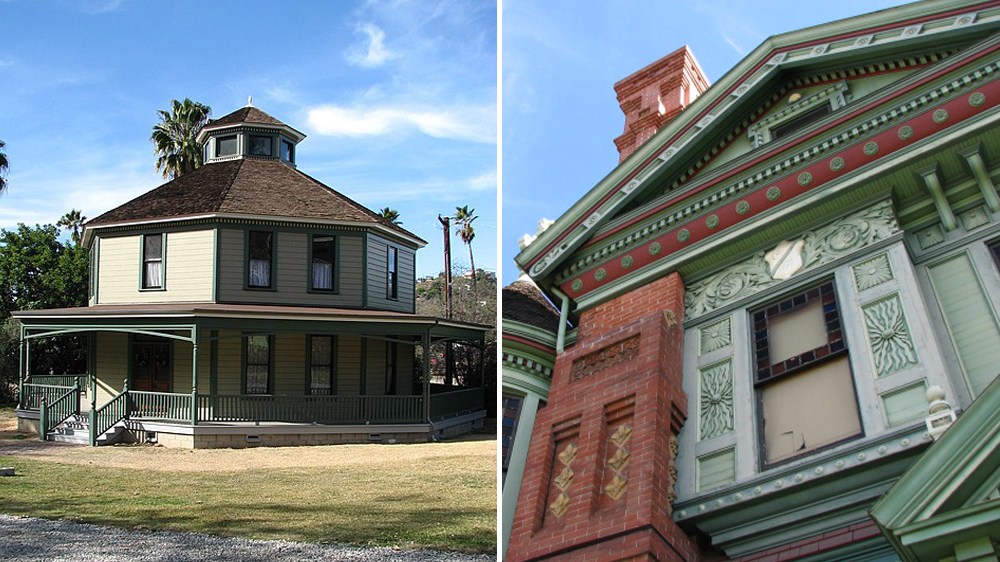Mythbusters: Historic-Cultural Monuments
LOS ANGELES (Variety.com) – Everyone with an interest in architecture knows that Los Angeles is a veritable wonderland of architectural treasures, and those of us who cherish beautiful buildings are regularly horrified to see magnificent properties diminished by owners with a lack of vision, or demolished by greedy developers. Who could forget the “ howls of protest ” from architecture preservationists and Hollywood historians when, in the late 1980s, Pia Zadora brazenly razed Douglas Fairbanks and Mary Pickford’s legendary Beverly Hills estate Pickfair in order to make way for a larger and rather garish Venetian style palazzo? The Mills Act was specifically conceived to bring these vulgarians to heel.
Enacted in 1972, the Mills Act allows owners of historic structures to enter into a contract with the city, and the basic deal is this: your property taxes will be reduced in exchange for your agreement to rehabilitate, restore, and/or maintain your property. The tax break we’re talking about here is no small thing, either; a Mills contract can lower your property taxes by as much as 75%. Qualifying homeowners can even display a plaque verifying that their property has Historic Cultural Monument status. Who wouldn’t want this? Well, people who buy and sell real estate might be on that list. Their line of work compels them to be experts on the subject of landmarking, and they know there can be a downside to pedigreed real estate.
In order to enter into a Mills contract, you first must have your property designated a Historic-Cultural Monument. Each city establishes their own criteria as to what this entails and also determine how many contracts will be allowed in their jurisdiction. Initially valid for a period of ten years, the contracts have automatic yearly extensions, as long as the beneficiary honors their agreement with the city. Inspectors do a yearly drive-by, and they don’t always let you know they’re coming. Still sounds pretty good, right? Well, here’s the rub: “If you landmark a building, it’s sort of stuck in time,” a prominent L.A. broker explains. “It usually means that the façade of the house can’t be changed, and it’s often the case that other things in the house can’t be changed either. Your property becomes permanently orange-flagged at city hall, and you have to go through lots of extra grief in order to do anything to your property. There are altruistic buyers who purchase properties simply because they want to protect them, and those people are going to get an extra bedroom in their Mies van der Rohe condo in heaven. However, plenty of other buyers resent the idea of buying a property they’re forbidden to make any changes to, so landmarking can make a property hard to sell. Not everyone understands historic preservation either, by the way. Replacing the original kitchen counter tile of a 1920s house with slabs of granite is renovating, not restoring.”
Sometimes the historic value of a building is far less than the ground it sits on. If you’ve got a small gem on a small lot that can’t be developed further, then of course it should be landmarked, and the tax savings will be worth the effort. But, if you’ve got a house on a large piece of property that’s hospitable to additional building, you might want to get some expert advice before you initiate the landmark process. A highly regarded Westside agent recounts an experience she had with a house in Santa Monica designed by architect John Byers. “Santa Monica is always a little dicey because the historic people there are very particular, and the house had been landmarked by five different agencies — Santa Monica, L.A., national – whatever,” she recalls. “It was a nice but unremarkable house with a traditional yard, and we couldn’t give that thing away because of the levels of landmarking involved. It wasn’t so much that prospective buyers were intent on changing the house, but when they were told they couldn’t change it they said ‘this is un-American! I’m gonna buy this house and somebody else is gonna tell me what I can and cannot do with it? Forget it.’”
Another case in point would be the Sturges house in Brentwood. Commissioned by aerospace engineer George Sturges and designed by Frank Lloyd Wright, it’s what’s known as a Usonian house, a term Wright coined to describe simple, small, moderately priced houses designed specifically for America’s middle class. Wright succeeded in building just seven of these houses, and the Sturges house is the only one in Los Angeles. For several decades, it was the residence of actor Jack Larson and director James Bridges, who died in 1993.
Larson remained in the house until his death in 2015 and the following year the house was put on the auction block by Los Angeles Modern and Design Auctions, but it failed to find a single bidder. Here’s why; it’s a small house – just 1,200 sq. feet – and it’s in terrible condition. It is, however, on a highly desirable double lot in a terrific location. Wright worked on the house with innovative architect John Lautner, who oversaw the construction, and together they developed sketches for an additional structure and a pool, which were never completed. “When potential buyers went to the city with the sketches, the city indicated they would make their life hell if they attempted to go forward with anything,” recalled an agent who assisted in the sale of the house. “If you could tear the house down the property would be worth a lot, but who wants to pay a premium price for a decrepit house?” After Herculean efforts that included a failed attempt at auction, the property did finally sell, for $1.85 million — almost a million bucks under it’s original asking price, and quite a long time for a home with such enviable architectural pedigree.

